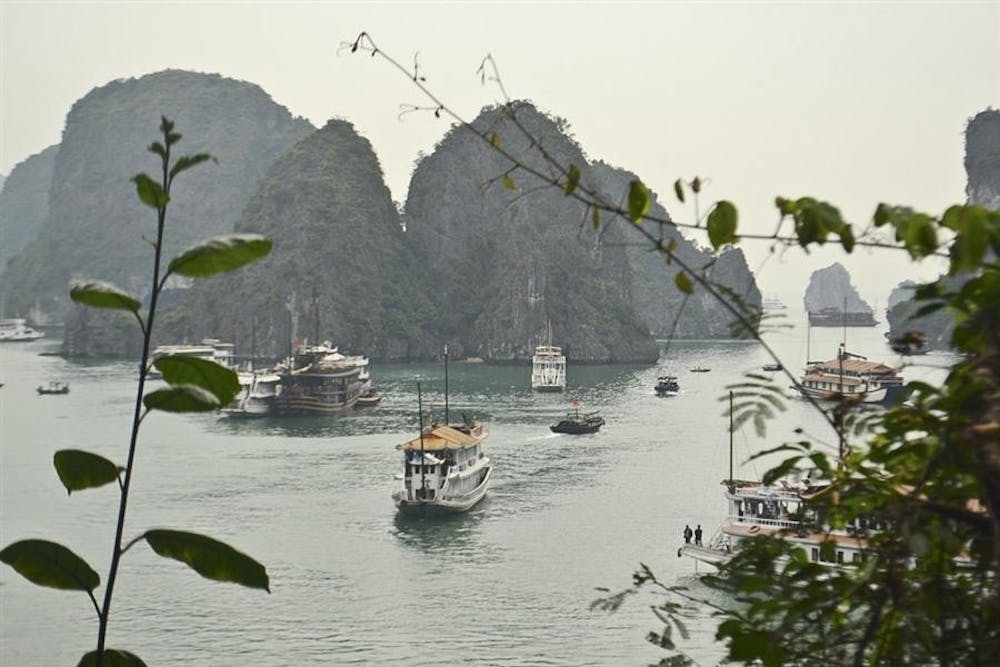fter sailing up the Saigon River, I was hesitant and had fluttered feelings about going past the flora-filled coast into Vietnam.
How was it that I was entering Vietnam with such ease? The country is constantly associated with communism, a tragic war history and the “American mistake” that started a revolution.
What I found in the people’s friendship, the city’s development and the strong national identity left me pleasantly surprised, but some of the aftereffects of war left
me horrified.
Visiting Vietnam forced me to hear the story from the other side of the river and challenged me to refocus my war binoculars.
I spent my first day traveling to the Cu Chi tunnels outside Ho Chi Minh City. The Viet Cong fought American forces from this underground community and built routes and weapons, created living arrangements and even founded health clinics. The entrances to the tunnels are camouflaged, making them barely noticeable on the ground.
Sitting in the first exhibit, listening to the introductory video, I watched a noticeably large flag wave next to a large photo of Ho Chi Minh, the father of communism in Vietnam. The introductory video began to roll clips from American attacks on guerilla soldiers in the tunnels and the narrator said, “The terrible Americans hurt the poor Vietnamese as they tried to fight for their freedom.”
Hearing the words “terrible Americans” caught me off guard. Sitting in the tunnels, trying to put myself on the other side, I was challenged to accept that the democratic government Americans portray as the only way is not necessarily other people’s ticket to freedom.
My guide, Phang, showed me around the tunnels, explaining the different traps the guerilla soldiers used on Americans, including underground traps. Seeing the sharp spears sticking out of the ground, listening to the historical accounts from the other side and hearing about Phang’s father, who fought in the war, I felt like I saw a part of the war that I never learned about in my American classrooms.
We finished our tour by crawling through three levels of the underground tunnels to get a feel for the claustrophobia experienced by the soldiers.
Five minutes underground, in tunnels that had already been widened for tourists, was more than enough — I was sweating, squeezed in tiny parameters and hysterically searching for the light at the end of the tunnel.
Visiting the Cu Chi tunnels was a chance to read the underground story, one that our generation can easily stray from. As I spent time with friendly local university students who showed me the flourishing streets back in Ho Chi Minh City, the society’s progress put me in my place.
It’s challenging but necessary to accept that what we have been told to believe is right or wrong isn’t necessarily universal.
— espitzer@indiana.edu
Column: Taking a look through Vietnam War binoculars

Get stories like this in your inbox
Subscribe





